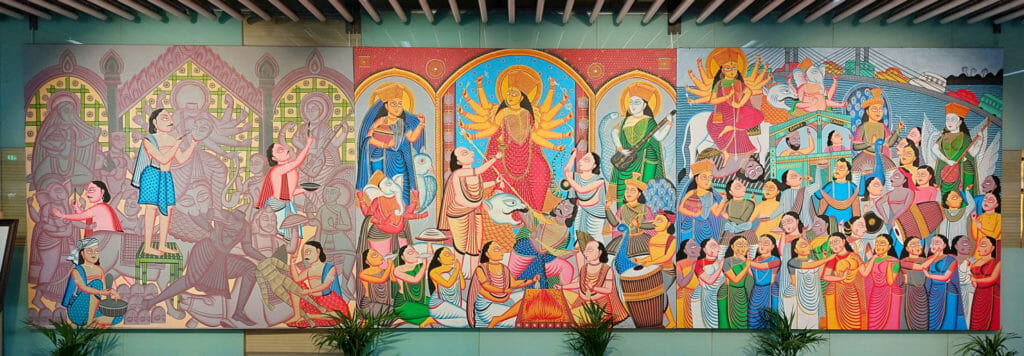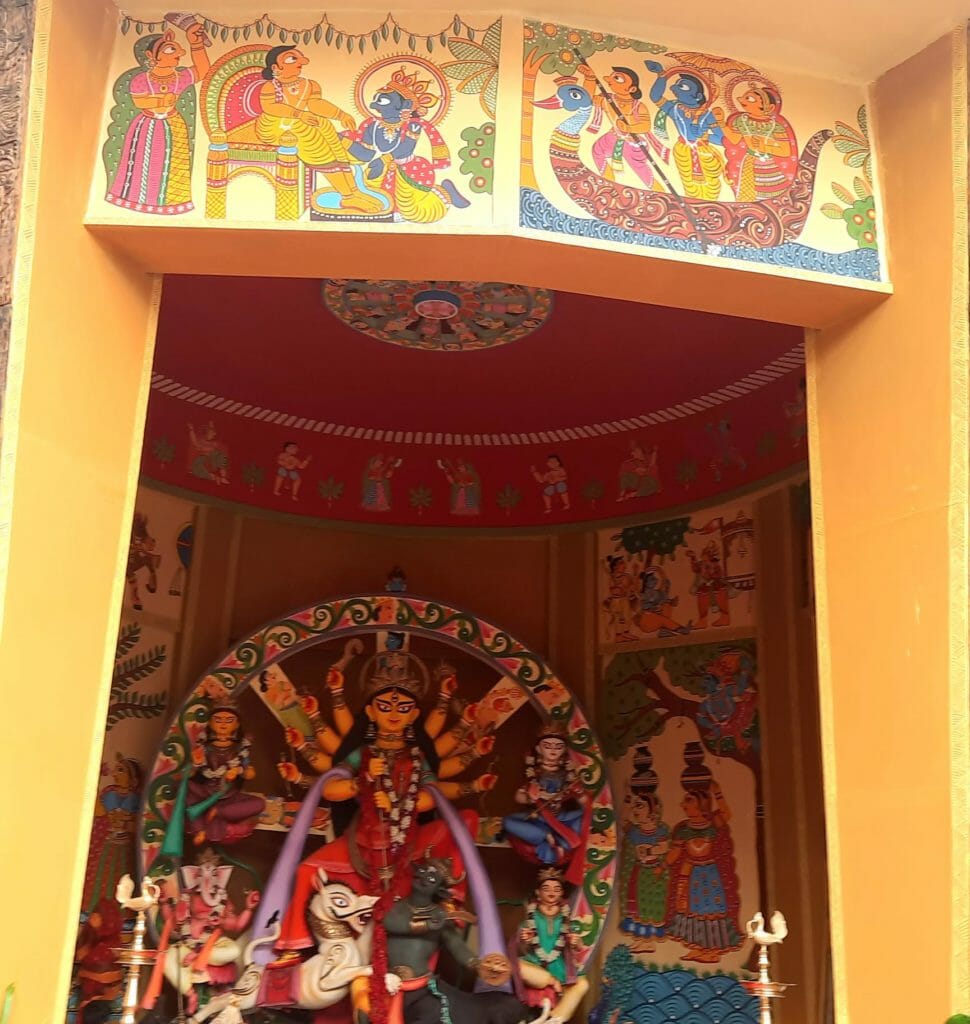I could barely contain my excitement as I stood looking at the Biswa Bangla painting ‘Making of the Goddess’ at the airport. It was Panchami and I was finally in Kolkata to be a part of ‘Pujo,’ which is synonymous with Durga Puja for anyone from Bengal.
I had read somewhere that there were around 2500-3000 pandals in Kolkata alone this year and I wanted to see at least 1% of them if not more. After all, Durga Puja in Kolkata had been recently declared by the UNESCO to be on the representative list of the intangible cultural heritage of humanity. The added excitement was that the Pujo was taking place at this scale after a pause of two years due to the pandemic.
Pandal hopping
For decades I had seen the pandals shown on DD Bangla. Finally I was getting a chance to see some of them real time, live. Armed with a list of the various pandals to visit – suggestions from the natives, my friends and I landed in the sweet city on a week-long trip.
The first pandal we visited was at the Belur Math and it was a joy to finally see Thakur after having crossed the river on a ferry from Dakshineshwar temple. Over the next few days I got to visit around 25 Durga Puja pandals and experience some of the flavours of the city. It was the first time I was pandal hopping in Kolkata and the atmosphere was steeped in the culture and tradition of the city – something one cannot find in other places, even those where many Bengalis have settled.
A colleague had mentioned that one would find pandals anywhere in the city and I found that to be largely true, often at stone’s throw from each other. They were beautifully decorated, often with themes, or just simple ones. We got to visit a couple of rajbaris too and there was a very different feel to the festivities there. I also got to participate in the sandhi puja and other rituals including sindhoor khela at an association.
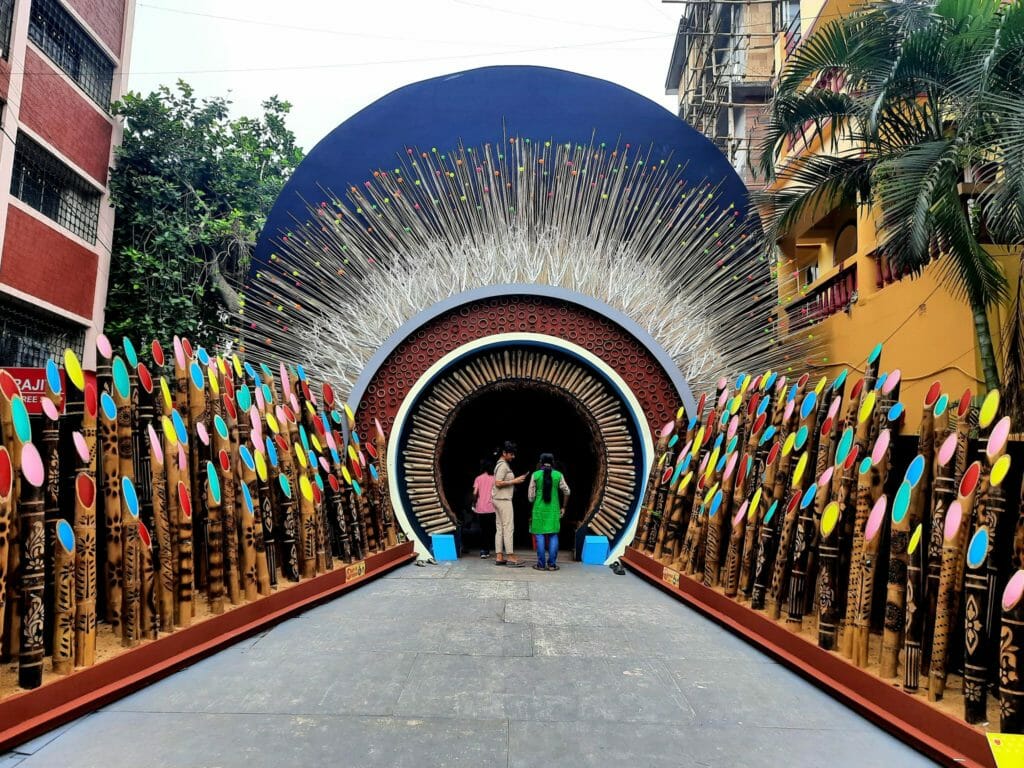
Pandal hopping at night was a never-before experience. As was eating puchkas right from the pot. The various means of transport available in the city was intriguing – be it the ambassador taxis, the trams, the autos, the cycle rickshaws or vehicles through apps. It made things easy for us, especially given the huge stream of people everywhere.
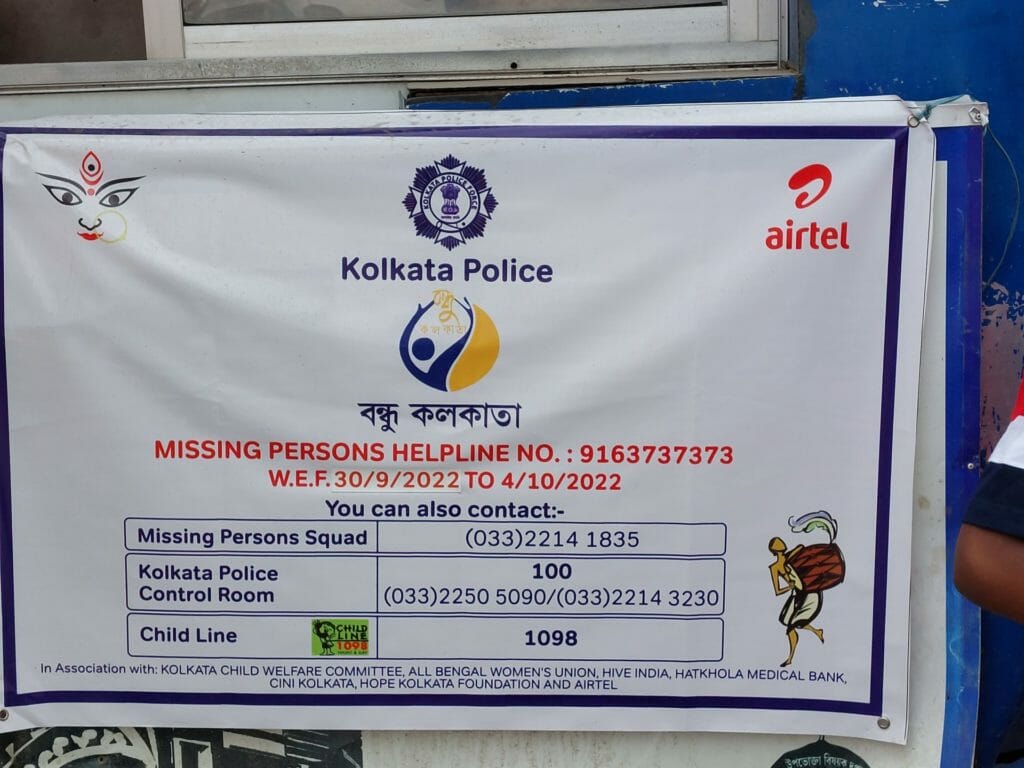
Staying with people, there were banners put up near some of the big pandals with contact information in case someone got lost. Some of the big pandals even had bamboo barricades to keep the crowds in check. There were volunteers too in one of the biggest pandals of the city who were controlling the exuberant visitors from nearly a kilometre away. While we had to walk long distances, the joy of seeing the pandals made up for the pain and fatigue, if any.
Needless to say, shopping was a joy and I wish I had had more time and baggage allowance to bring home some of the various arts and crafts one can find in Kolkata, so beautiful are they!
A few niggles
At this juncture, let me backtrack to the day we landed in the city.
The first thing to hit me as I stepped out of the airport was the humidity of the place, something I am not used to. This meant that I needed to consciously keep myself hydrated while pandal hopping. Having anticipated this, I had equipped myself with a steel bottle which I would refill at our hotel or other such places during the entire period of my stay.
Packaged water was available everywhere as also various brands of soft drinks and coconut water. However, the disposal mechanism for used bottles and coconut waste did not appear to be followed by most. Also included here is the waste generated from food points too that were being thrown about without concern – have to be honest here and say that it was disgusting.

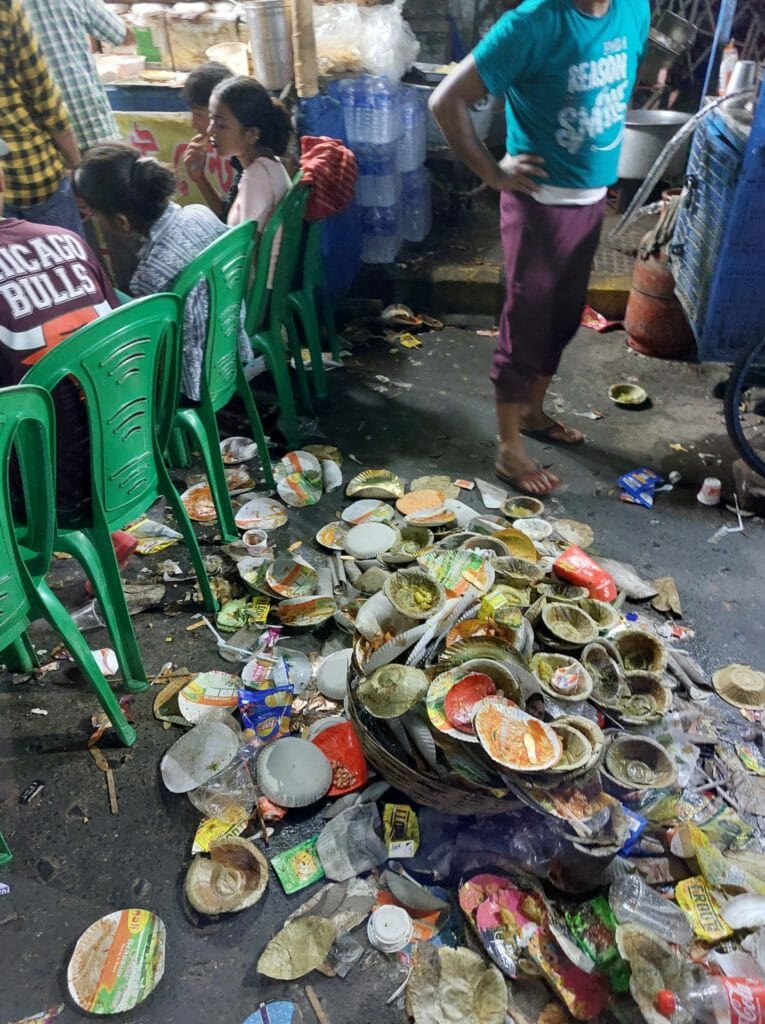
So much garbage was being generated by the minute, the municipal workers must have been on their toes during the entire period of Durga Puja and for days after too. Not to mention the fact that one had to literally walk through or near such piles in order to get to many of the pandals.
Read more: As Kolkata begins Durga Puja festivities on Mahalaya, environment gets a raw deal
In addition to the above, a couple of aspects kept worrying me every time I saw crowds at the pandals.
Bamboo was the chosen material for scaffolding at most places – be it to control crowds, put up the pandals or display advertisements on. Add to this the presence of temporary electric wires drawn to light up the pandals, and you are sitting on an explosive that can burst anytime and without notice. The danger here is two-fold. Bamboo is easily inflammable while loose wires can lead to electric fires or even electrocution.
However, what appeared to be starkly missing in most of the medium-sized and major pandals that I visited were fire extinguishers and clearly demarcated fire escape routes. A couple of pandals did have fire extinguishers and clear water. But they were few and far in between. Also missing were designated meeting points in case of some emergency / disaster. Thankfully no such events were reported during this Pujo at Kolkata.
Having said that, I was personally witness to a lady’s saree catching fire as she passed by a banked ‘dhunuchi‘ (an earthen pot used as an incense burner during the puja and also during a typical ritualised dance worship). Luckily, she was in a cotton saree and wearing a thick petticoat which prevented the fire from reaching her skin. Onlookers nearby rushed to her and doused the fire with their hands – not the best thing to do, but no water was available at that spot at that time!
All this happened within a span of 4-5 seconds. This led me to wonder if the volunteers in major pandals were trained to handle such or other bigger emergencies. Or if adequate provisions had been made for fire engines to easily reach the pandals despite the crowds. These challenges though can be addressed at the pandal level.
Another aspect of the festival that has been worrying me is the countless number of advertising flex banners across the city. Literally every main road and lane leading to a pandal had big hoardings put up, apparently all for the duration of the Durga Puja only. While the corporation may have made some money from these advertisements, I am left wondering how these tons of PVC flex aka poison plastic will be disposed of. PVC is non-biodegradable and burning it will release dangerous gases into the atmosphere. This is a major concern that the government should look into, going forward.
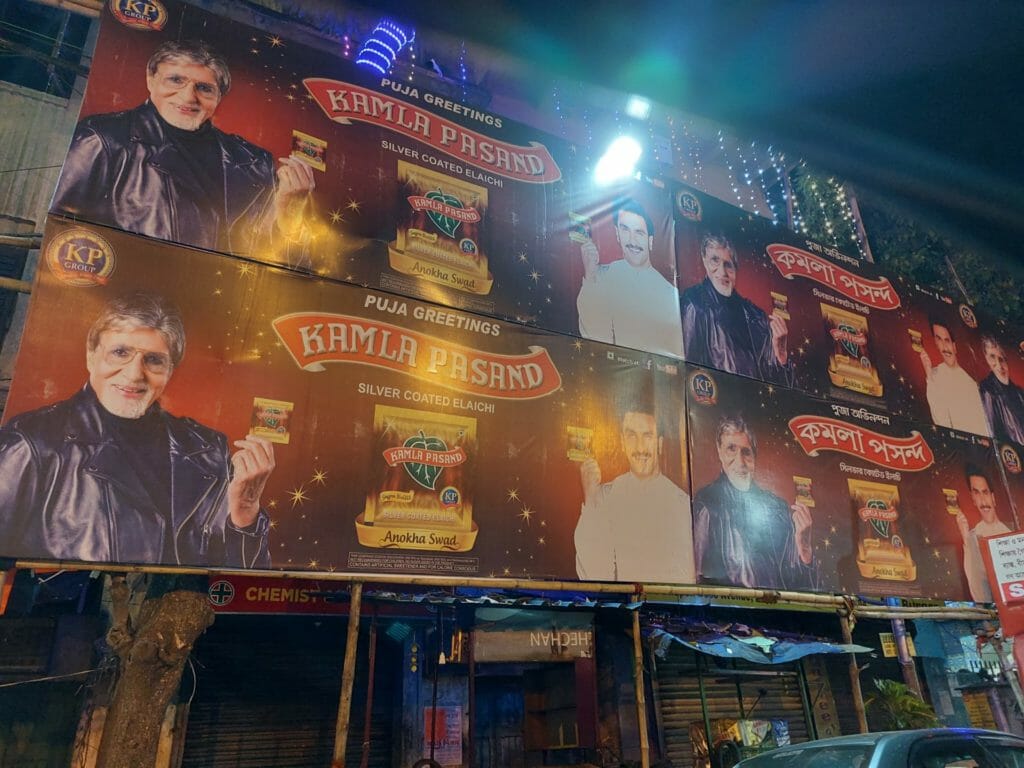
An unforgettable experience
At the end of the day, have to acknowledge the Kolkata police force and the countless volunteers who helped them during the festival, day and night. Thanks to these people, the flow of people and traffic was generally smooth and accidents at a minimum.
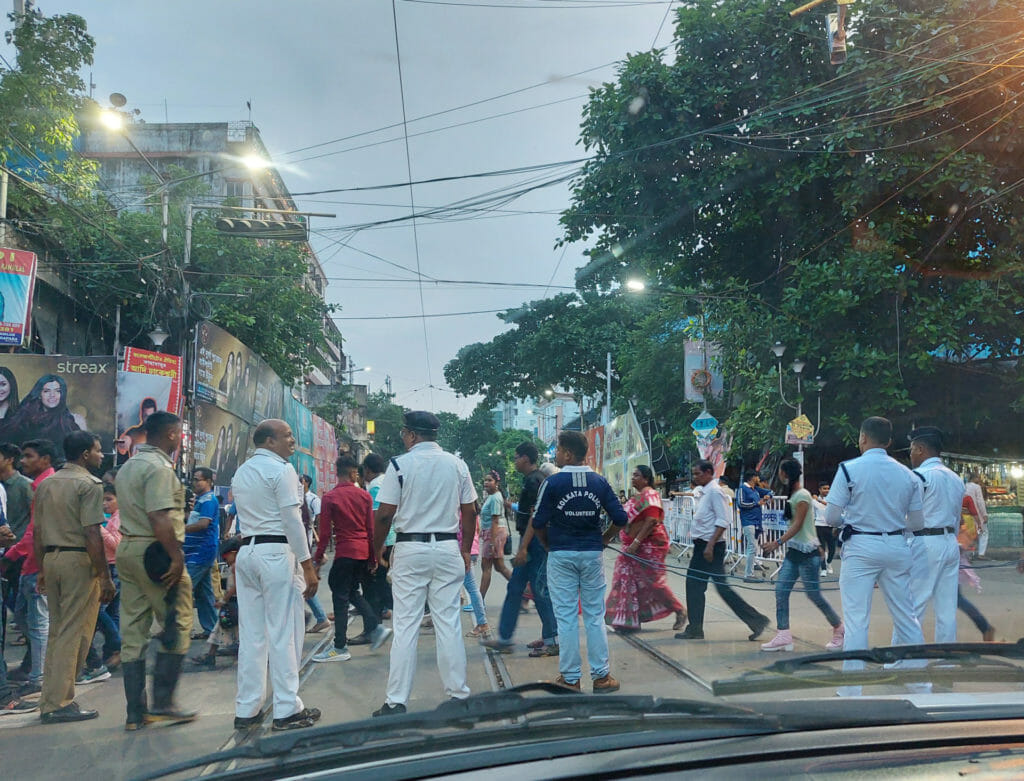
What I found very heartening was the joy and enthusiasm with which the Bengalis celebrate the festival of Durga Puja – be it following the traditions, the pandal hopping or the feasting. Their love for the festival is so infectious that it took me to Kolkata from a 1500 kilometres away. I feel so blessed to have been there for the Pujo. To use the same expression of gratitude and reverence for the goddess that the people of the state do, ‘Joy Maa’.
